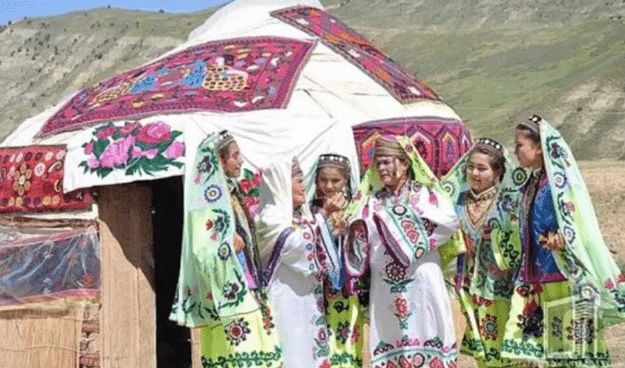Understanding Amaziğ people
The Amaziğ people, or Berbers, indigenous to North Africa, boast a rich cultural heritage that has intrigued scholars for centuries. Their deep-rooted connection to the land spans millennia, linking back to ancient civilizations like the Carthaginians and Numidians. Despite enduring waves of colonization, the Amaziğ people resiliently maintain their distinct identity, proudly identifying across Morocco, Algeria, Tunisia, Libya, and beyond. The Tamazight language, with its myriad dialects, serves as a cultural cornerstone.
Passed-down traditions shape their society, evident in vibrant festivals, soulful music, and unique artistic expressions like hand-woven carpets and intricate silverwork jewelry. Exploring the multifaceted Amaziğ culture unveils a captivating world of diverse tribes, showcasing a community far richer than meets the eye.
The history and origins of the Amaziğ people
The history and origins of the Amaziğ people are deeply rooted in North Africa, particularly in countries such as Morocco, Algeria, Tunisia, Libya, and Mauritania. These indigenous Berber communities have a rich cultural heritage that spans thousands of years.
Dating back to ancient times, the Amaziğ people were part of various empires and civilizations that shaped their identity. From the Phoenicians to the Romans and Arabs, each era left its mark on their language, customs, and traditions.
One fascinating aspect of the Amaziğ culture is their unique language known as Tamazight. It is considered one of the oldest languages in the world with a rich oral tradition passed down through generations. Despite periods of oppression and marginalization throughout history, today efforts are being made to preserve this ancient language.
The Amaziğ people have also maintained distinctive artistic expressions such as music, dance forms like Ahwash or Hafla dances at celebrations or gatherings), pottery making (Tamegroute), weaving rugs (Zanafi) which showcase their creativity and craftsmanship.
In recent years there has been a resurgence of interest in Amaziğ culture with increased recognition from governments for preserving their heritage. Festivals celebrating Amaziğ music, poetry competitions promoting Tamazight literature demonstrate a growing appreciation for this vibrant community’s contributions.
Cultural traditions and practices of the Amaziğ people
The Amaziğ people have a rich and vibrant culture that is deeply rooted in their traditions and practices. Their cultural heritage spans thousands of years, reflecting the diverse influences from various civilizations that have inhabited North Africa.
One of the key aspects of Amaziğ culture is its strong emphasis on community and family values. Family ties are highly valued, with extended families often living together or in close proximity to one another. Respect for elders is also an integral part of their cultural fabric.
Music and dance play a significant role in Amaziğ traditions. Musicians commonly use traditional instruments such as the oud, guembri, and bendir to create rhythmic melodies that accompany spirited dances performed during festivals and celebrations.
Amaziğ cuisine is renowned for its unique flavors and use of local ingredients. Staple foods include couscous, tagine (a slow-cooked stew), and various types of bread made from wheat or barley flour. Traditional dishes often incorporate aromatic spices like cumin, coriander, saffron, and cinnamon.
Notable contributions of the Amaziğ people to society
The Amaziğ people, also known as the Berbers, have a rich history and culture that has had a significant impact on society. From their ancient origins in North Africa to their present-day presence across the region, the Amaziğ people have made notable contributions in various fields.
One area where the Amaziğ people have excelled is in agriculture. They developed sophisticated irrigation systems and farming techniques that allowed them to cultivate crops even in arid environments. Their knowledge of sustainable farming practices helped ensure food security for their communities and influenced agricultural practices throughout history.
Another noteworthy contribution of the Amaziğ people is their craftsmanship. The Amaziğ people actively create intricate designs and patterns in pottery, textiles, jewelry, and other decorative arts. Neighboring civilizations, such as the Romans, highly regarded their skills in metalworking and ceramics.
Modern challenges facing the Amaziğ community
Cultural Assimilation
Globalization and urbanization pose significant challenges as younger generations in the Amaziğ community increasingly gravitate towards mainstream cultures, risking the erosion of their own cultural heritage.
Economic Disparities
Persistent economic disparities within the Amaziğ community result in limited access to education, healthcare, and job opportunities, exacerbating social inequalities and hindering overall development.
Political Marginalization
The Amaziğ people, often considered minorities in their respective countries, face political marginalization, struggling to have their voices heard in decision-making processes that directly impact their community.
Environmental Degradation
Traditional practices and livelihoods tied to agriculture or pastoralism are under threat due to environmental degradation, including climate change and unsustainable land use practices, disrupting both livelihoods and cultural traditions deeply rooted in nature.
Community-Led Initiatives
Despite these challenges, a growing movement within the Amaziğ community is actively addressing issues. Bilingual education programs valuing both Arabic (or French) and Tamazight languages are being promoted. Initiatives preserving traditional knowledge through storytelling sessions or cultural festivals have gained traction.
Advocacy and Awareness
Dedicated advocacy organizations are crucial in raising awareness about challenges faced by the Amaziğ community on national and international platforms. Campaigns focused on land rights recognition and political representation reforms strive for equal opportunities.
Ongoing Journey for Inclusion
While significant progress has been made in recent years, the journey towards full inclusion and cultural revitalization is ongoing. Through collective efforts of community members and allies, the Amaziğ people can hope for a brighter future.
Conclusion
The Amaziğ people, a resilient community with a rich history, have preserved their traditions despite numerous challenges. Their origins span thousands of years, maintaining a strong sense of identity showcased through cultural practices like music and storytelling. Amid modern challenges, including language preservation and discrimination, efforts to revive Amaziğ culture are underway. Advocacy organizations work towards Amaziğ language recognition for future generations. Appreciating global diversity is crucial, and the Amaziğ people exemplify the celebration of cultural richness. By learning about their unique heritage, we foster open-mindedness and support initiatives preserving languages and traditions.


